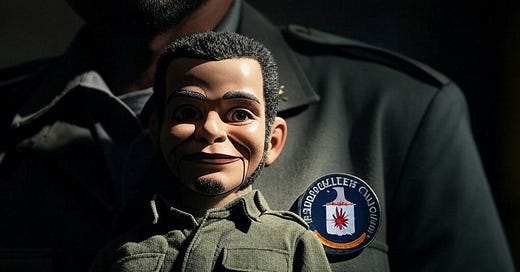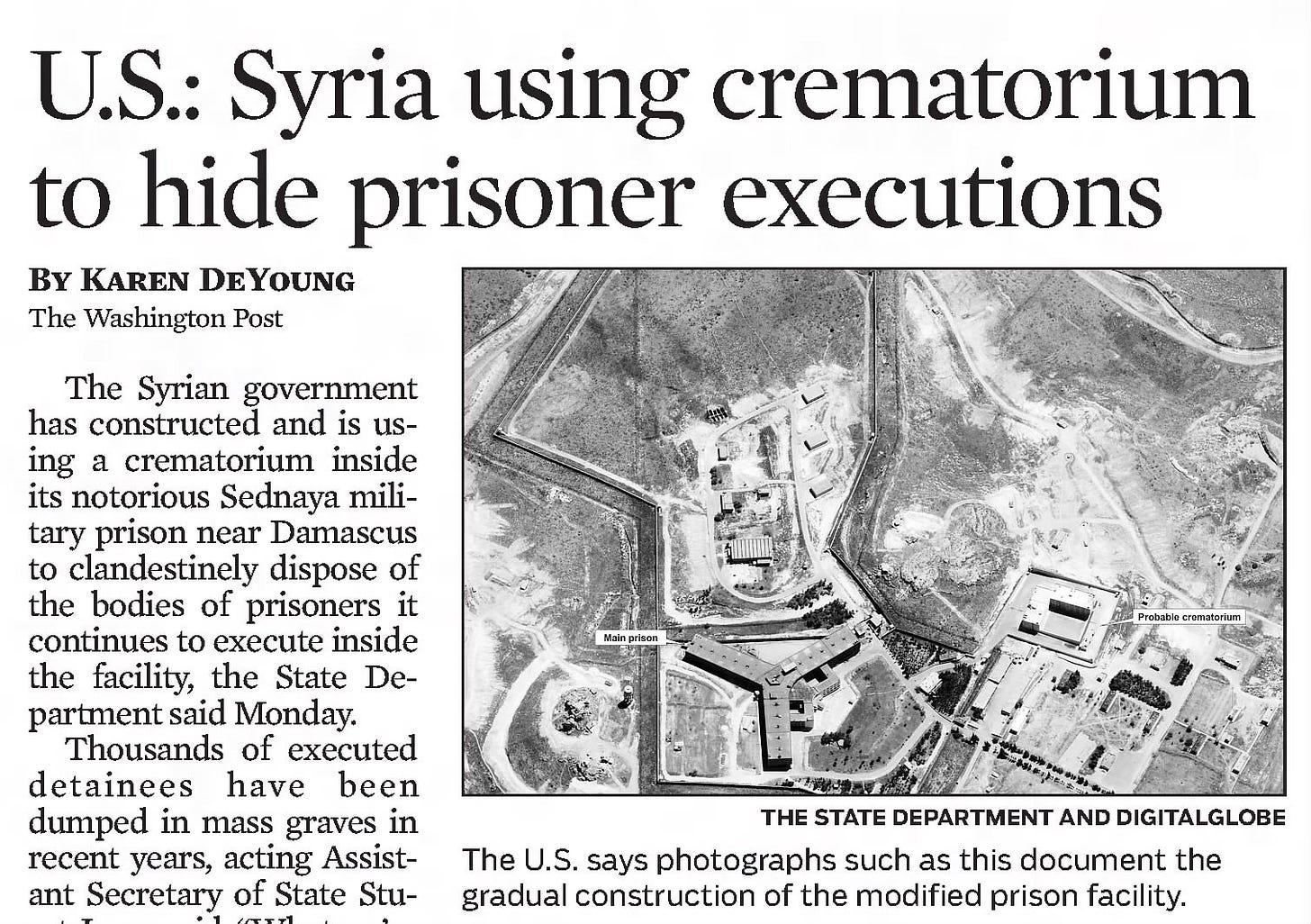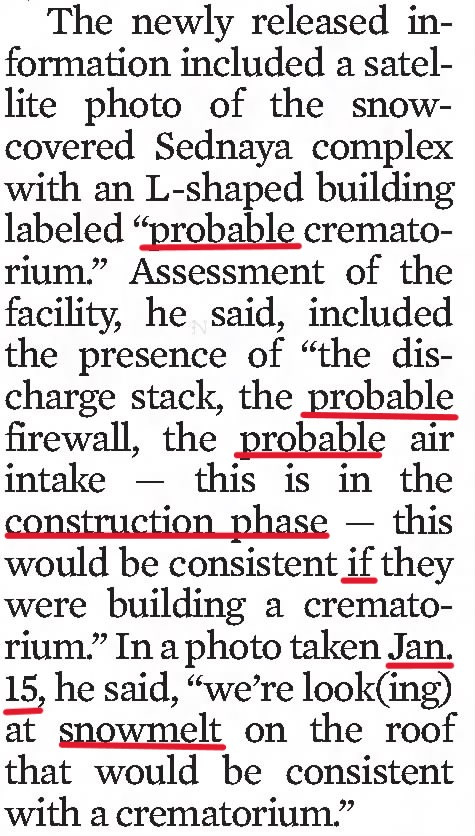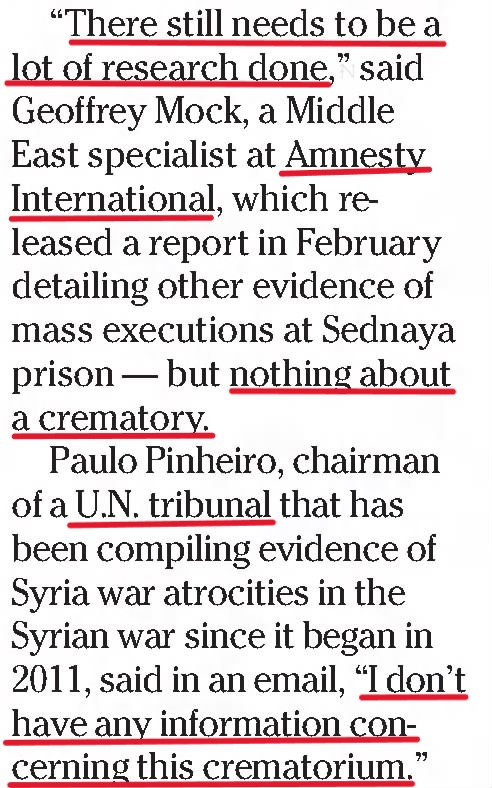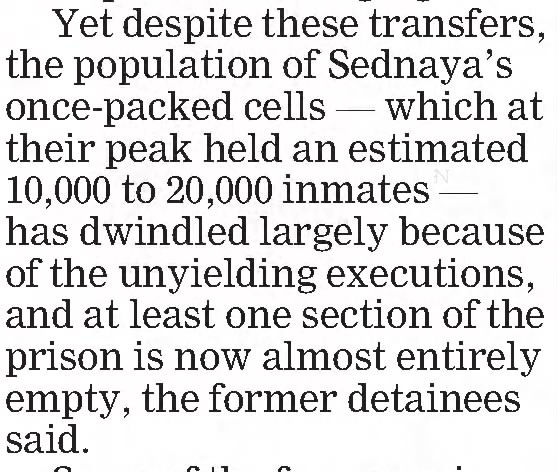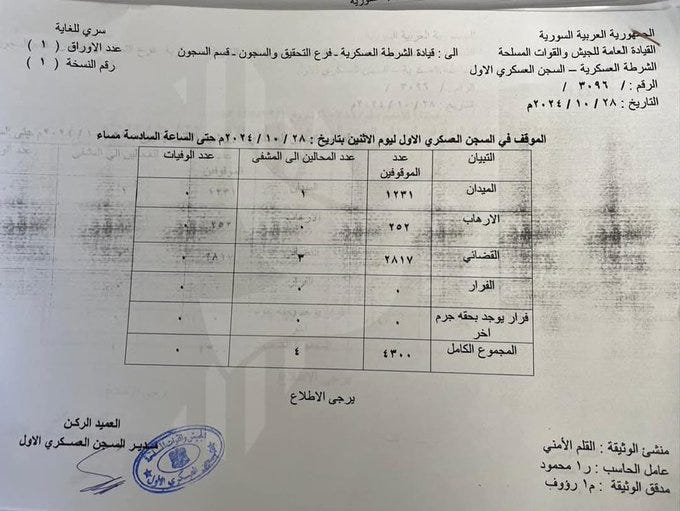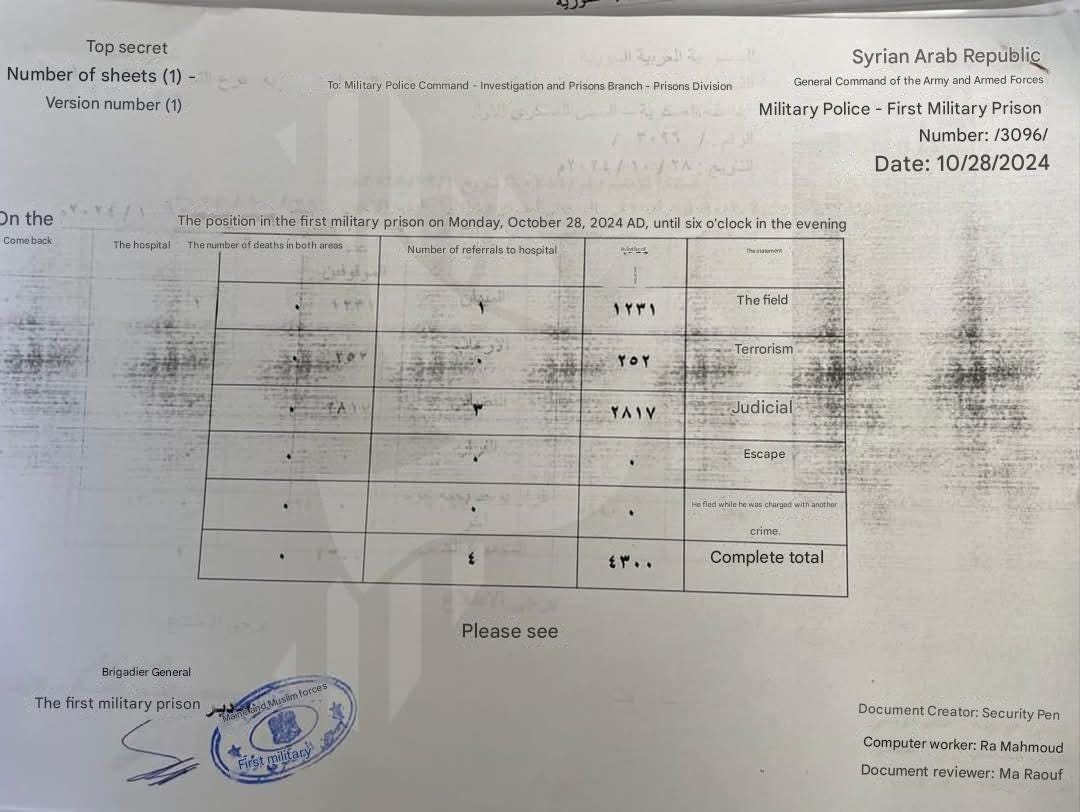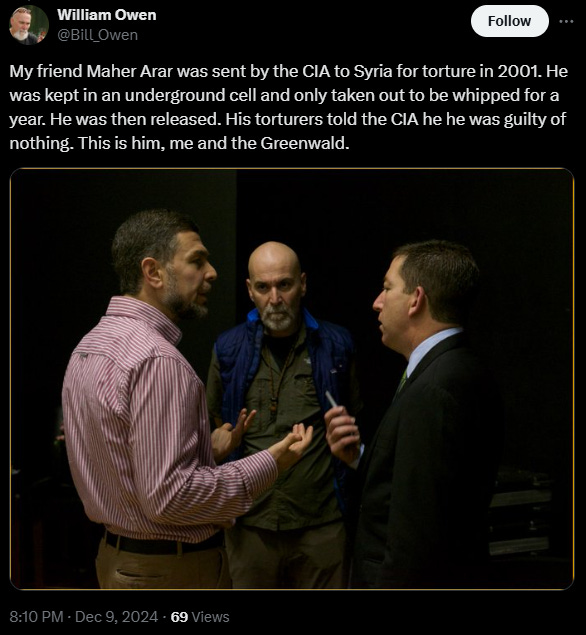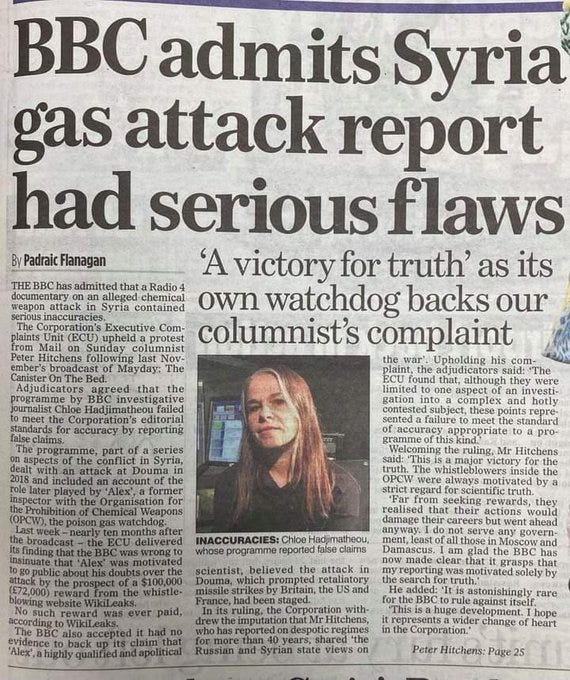Behind Sednaya's walls: Tragedy & Propaganda
Discover how propaganda, intelligence ops, and history collide in Syria’s “human slaughterhouse.”
Sednaya was referred to as a “human slaughterhouse.”
Amidst the lightning offensive to Damascus in Syria that toppled the Bashar al-Assad regime on Sunday (December 8), militants of the anti-government rebel group Hayat Tahrir al-Sham (HTS) stormed the feared Saydnaya Prison. Thousands of detainees, primarily political prisoners who had languished since the start of the Syrian uprising in 2011, were freed from what Amnesty International described in 2017 as the “Human Slaughterhouse”.
Amnesty estimated that between 5,000 and 13,000 people were “extrajudicially executed” at Saydnaya between September 2011 and December 2015, while thousands more were likely to have been put to death since then. Some rights groups have described Saydnaya as a death camp, with the Syrian Observatory for Human Rights, an organisation based in the UK estimating that over 30,000 detainees were killed in Saydnaya alone.
The reports are harrowing: An execution room. Cremation rooms. Prisoners were reportedly denied food and water, with some resorting to drinking their urine. The cells were overcrowded, and the prisoners were regularly abused.
This is what the media is telling us. And one thing, I’ve learned:
DON’T TAKE ANYTHING AT FACE VALUE.
So, is the “human slaughterhouse” real, a myth, or something in between? Let’s look at the evidence.
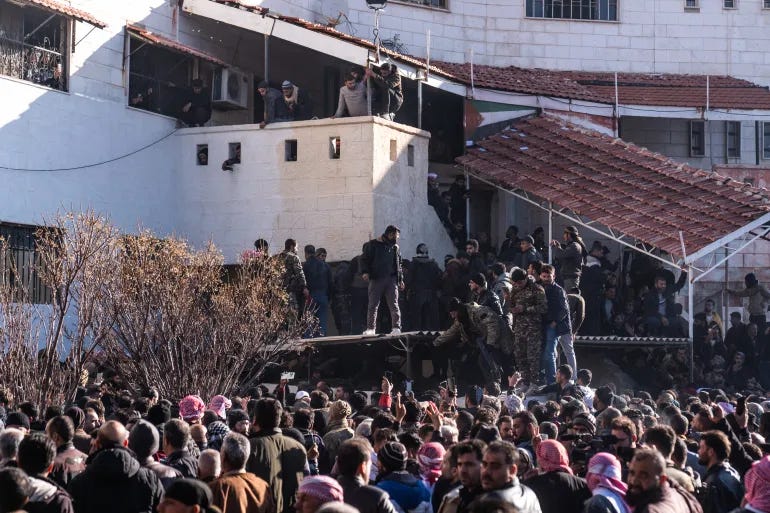
Examine The Evidence
The White Helmets
The liberating force was the Syrian civil defence group known as the White Helmets. Interesting info about them:
The White Helmets was started by James Gustaf Edward Le Mesurier. Le Mesurier was a British Army officer and worked as part of the UN peacekeeping force in former Yugoslavia.
He was also an intelligence officer in Bosnia and Kosovo. In 2013, with the Turkish NGO AKUT Search and Rescue Association, ARK (for which Mesurier worked) started training non-governmental Syrian civil defense teams in Turkey, funded by the UK, U.S. and Japanese governments and managed by Le Mesurier.
Based on his history, all signs point to Le Mesurier and The White Helmets being involved in Western Intelligence and Operation Gladio style regime changes. Last time I checked, western intelligence wasn’t exactly into “philanthropic” ventures.
Unless it strategically fit their narrative.
Amnesty International's Reports:
Amnesty International conducted investigations into Sednaya Prison, culminating into the 2017 report titled "Human Slaughterhouse: Mass Hangings and Extermination at Saydnaya Prison, Syria".
This report included interviews with former detainees, guards, and judicial officials, providing detailed accounts of torture, mass hangings, and inhumane treatment.
However, this report drew some eyebrow raising. The report relied on a small number of anonymous sources (always a red flag) and the use of digital recreations rather than direct evidence. Critics, including those from the Syria Solidarity Network and other antiwar researchers, argued that the report contained fabrications and was part of U.S. war propaganda. It’s also suspicious that the report came out after the Syrian government held of a US orchestrated op to overthrow it and less than two weeks before peace talks in Geneva also makes it.
These war crime charges become the excuse for intervention and war against an entire population. In Iraq, Yugoslavia and Libya they became the justification for tearing down the entire government structure, its protective legislation and nationalized industry, and the kidnapping and execution of the top leadership.
2017 Article: War, lies and NGOs: Amnesty International’s Report on Syria
The lack of concrete evidence like photos or videos was highlighted as a major flaw.
And this wouldn’t be the first time Amnesty International was involved in a false flag operation.
In October 1990, Amnesty International verified and helped promote a story about a young woman named Nayirah who testified about Iraqi soldiers tearing babies from incubators and leaving them “scattered like firewood across the floor.”
Turns out “Nayirah” was the daughter of the Kuwaiti ambassador in Washington DC. She’d never even been in Kuwait. However, her testimony did provide the outrage needed to start the first U.S. war in Iraq.
It did the same thing for a report on Gadhafi using mercenaries to kill civilians.
And the same thing reporting “war crimes” and “genocide” in Yugoslavia in 1999.
All debunked.
And there’s Yasmin Hussein. In 2015, she was the director of faith and human rights. Previously, she was the head of Amnesty’s international advocacy and was also a prominent representative at the UN. Turns out, she has ties to the Muslim Brotherhood and Hamas.
The Caesar Photos:
The story goes: A military defector known as "Caesar" smuggled out over 53,000 photographs documenting the torture and starvation of detainees in various Syrian prisons, including Sednaya. These photos were analyzed by a legal team including Sir Desmond de Silva QC and others, who concluded that they provided credible evidence of torture and killing. The Caesar Photos have been used in various international legal contexts to substantiate claims about conditions in Syrian detention facilities.
Let’s peel back the layers:
The organization that reported and verified these photos was the Human Rights Watch. The HRW has so much controversy and criticism that there’s a whole wikipedia page dedicated to it. They’ve also received money from Qatar, Oxfam Novib (mostly funded by the Dutch government), Ford Foundation (an alleged CIA front), Rockefeller Brothers Foundation, among others.
So, maybe not the most unbiased organization. Or scrupulous, considering they took bribe donations.
But, in regards to the photos, turns out…They never even met "Caesar"!
They received the full set of images from the Syrian National Movement. Then it got interesting.
There is no Syrian National Movement.
At least, not officially. Then I found a 2014 Carnegie Endowment for International Peace's article that mentions the SNM. And an article by MENA Research Center, which was started by the Harvard Business School. It is led by Emad ad-Din al-Rashid, who is noted as a board member of the Syrian Islamic Council (SIC), and allegedly attended the meeting with Caesar. The article implies that the SNM is a subgroup of the SIC.
Then the road of where these photos came from got even muddier. The HRW document stated that “Members of that group formed the Syrian Association for Missing and Conscience Detainees (SAFMCD)” took custody of the files, and they got the files from them.
So, a lot of hand changing. And more suspicious things.
The “experts”. The verification of the Caesar photos was conducted primarily by the Carter-Ruck law firm, which assembled a group of forensic and medical experts to examine the photographs.
Why would an islamic coalition be contracting a high-profile, British law firm for forensic analysis?
I don’t have the answer for that yet, but it raises questions.
Satellite Imagery and US State Department Analysis:
The US State Department released satellite images in 2017, suggesting modifications to a building in Sednaya Prison consistent with the construction of a crematorium to dispose of bodies, aiming to cover up mass murders. This was part of a broader accusation of systematic killings in the prison.
And the grounds for this determination?
The “intelligence community” (read CIA) and Amnesty International are the ones you claimed it was a crematorium. As we’ve already read, they may not be exactly unbiased organizations. As you read through their “analysis” it is obvious that a narrative is being followed, if not forced.
“Probable”. And snow melting. That’s it.
And then, even Amnesty International and the United Nations backtracked their claims in a very PC way:
Examine The Stories
Existence of Hidden Underground Cells:
Several news stories from sources like Reuters and the BBC, dated December 8th and 9th, 2024, reported on efforts by Syrian civil defense groups, known as the White Helmets, to search for hidden underground cells at Sednaya Prison, following claims by survivors that detainees might still be trapped there. These reports included mentions of specialized teams looking for secret compartments and appeals for codes to electronic doors.
However, the Association of Detainees & the Missing in Sednaya Prison (ADMSP) issued a statement on December 9th that explicitly denyied the existence of any underground cells at Sednaya, stating that the last detainee was released on December 8, 2024, and there was "no truth" to the presence of detainees trapped underground.
So, debunked.
Number of Detainees and Casualties:
Reports from Amnesty International and the Syrian Observatory for Human Rights (SOHR) have long cited numbers in the tens of thousands regarding detainees killed or tortured at Sednaya since the Syrian civil war began in 2011. These organizations have previously estimated between 5,000 to 13,000 extrajudicial executions between 2011 and 2015. In 2022, SOHR said that nearly 30,000 people were detained there.
Some were even saying “150,000 prisoners” were released.
This, however, seems to fly in the face of previous peaks about the prison.
There's a notable lack of direct, current reports providing updated numbers post-Assad's fall. Below is a document found in Sednaya prison which details the number of prisoners that were there and seems more consistent with the “thousands of prisoners released” headlines.
First section is (الميدان) which pretty much means “the field”: 1,231 prisoners
Terrorism: 252
Judicial decision: 2,817
Total: 4,300
So, it would appear that the initial numbers may have been exaggerated.
The Testimonies:
Perhaps the most important piece of all of this is the testimonies of the prisoners who were actually there. Some names were in the news before this year - Maher Arar, Mazen al-Hamada, Abdullah Almalki, just to name a few. The stories they recounted were harrowing, to say the least.
The body of Mazen al-Hamada was found on Monday the 9th (he had been recaptured previously).
Maher Arar was a Canadian citizen who was basically kidnapped in 2002 and tortured for a year.
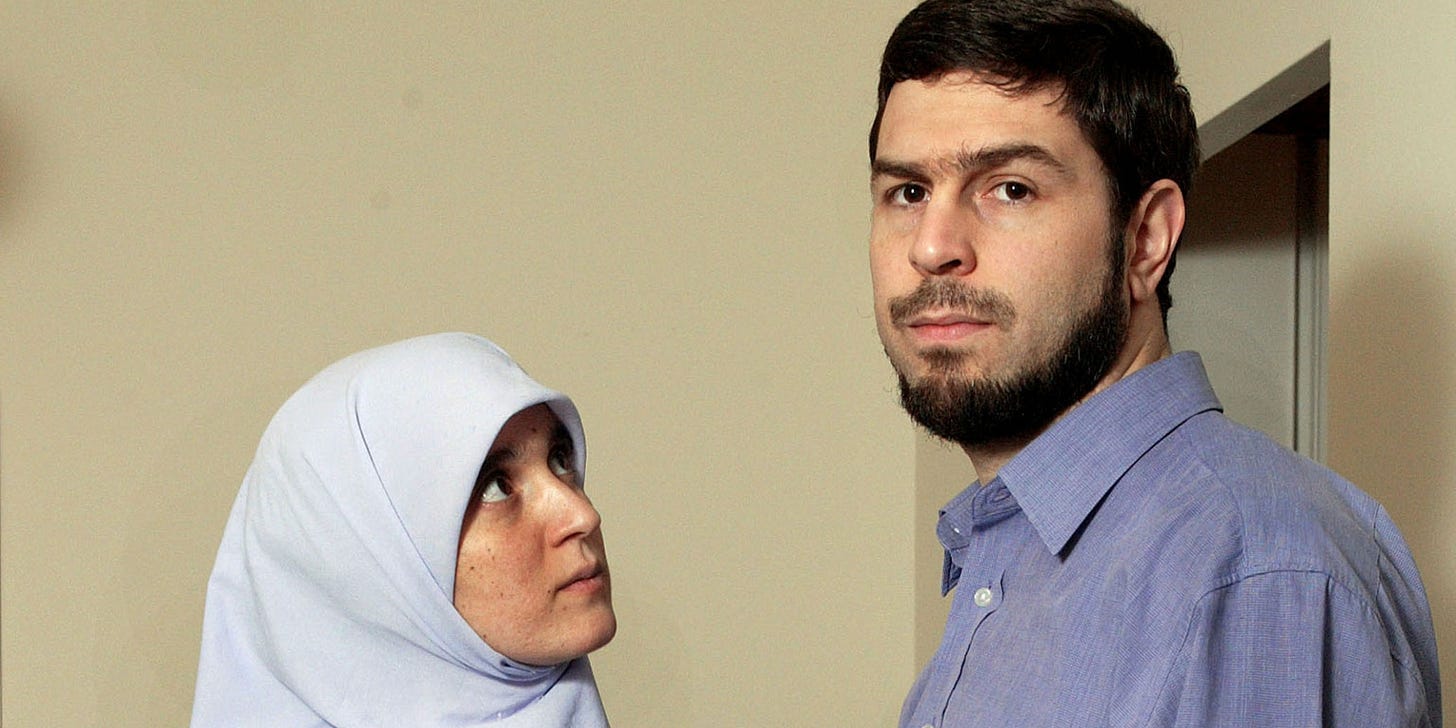
Arar was held in a small, dark, underground cell measuring approximately 3 feet wide, 6 feet long, and 7 feet high, which was nicknamed the "grave." This confinement lasted for 10 months and 10 days. He was beaten with electrical cables among other psychological tortures.
Abdullah Almalki was another Canadian citizen that was imprisoned and tortured in 2002. He was imprisoned for nearly 2 years. He also was beaten with electrical cables and was subjected to electric shocks. Arar ended up finding him in the prison - by the time he did, he was emaciated and weak.
Two other Canadians also endured similar treatment around the same time - Ahmad Abou-Elmaati and Muayyed Nureddin.
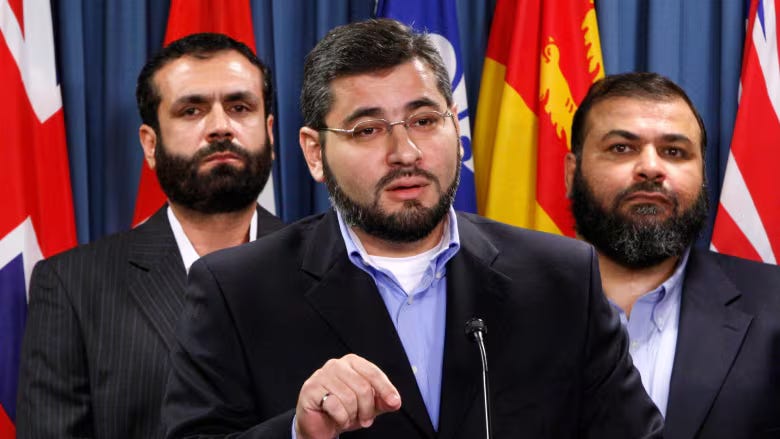
MAYBE SOMEONE SHOULD LOOK INTO CANADA??
A story for another time.
What is clear, from my research, is that the torture was real.
Numbers were inflated. NGOs had shady connections. The physical evidence and reporting was obviously narrative-driven.
But the torture really happened, just as it did with Abu Ghraib, Darfur, and others. Perhaps most alarming (or maybe not) was that evidence points to the CIA and Western Intelligence being behind sending people there.
OUR TAKE:
The atrocities at Sednaya Prison are undeniably horrifying, but the narrative surrounding them demands closer scrutiny. While the actions of Assad’s government are reprehensible, they are, by all accounts, part of a broader geopolitical strategy tied to the strategy of tension—a tactic famously utilized in Operation Gladio.
Basically, fear, instability, and violence are manipulated to maintain Western dominance and influence.
The strategy of tension, a Cold War-era method used by NATO and Western intelligence agencies, involved orchestrating or exploiting acts of terror and unrest to sway public opinion, justify interventions, and suppress dissent.
In Italy, for instance, Gladio operatives were implicated in bombings falsely attributed to left-wing groups, creating a pretext for crackdowns on political opponents. These covert operations are also likely what occured in the 2017 accounts of Assad “gassing his people” and bombing the clinic treating the victims.
Don’t believe me? Take a look at this excerpt (credit to Derrick Broze for great journalism):
Syria’s plight bears striking similarities to other historical cases where Western intelligence leveraged human rights abuses to achieve regime change. For example:
Iraq (2003): The false claims about weapons of mass destruction, coupled with staged testimonies such as Nayirah’s fabricated incubator story in the Gulf War, were used to justify the invasion and subsequent dismantling of Iraq’s government.
Libya (2011): Reports of atrocities by Gaddafi’s regime, many of which were later discredited or exaggerated, became the foundation for a NATO intervention that left the country in chaos and a haven for extremist groups.
Iran (1953): The CIA-backed coup that ousted Prime Minister Mossadegh relied on a disinformation campaign portraying him as a communist threat, justifying the installation of the Shah as a Western-friendly autocrat.
In Syria, Assad’s fall from grace in Western eyes aligns with his refusal to align with U.S. strategic interests, such as rejecting pipeline projects favoring Gulf states and resisting U.S. hegemony in the region.
Once a potential ally, Assad became a target as his policies aligned more closely with Russia and Iran. The timing of accusations like those tied to Sednaya Prison and the Caesar photos fits into this pattern, where allegations of mass atrocities—real or exaggerated—become tools to erode public support for a regime and justify intervention.
I believe the term is “spreading democracy.”
The Sednaya narrative also highlights the role of organizations like the White Helmets (involved in the gas attack) and Amnesty International, both of which have connections to Western intelligence networks. Amnesty’s history of promoting dubious claims mirrors the disinformation tactics seen in Operation Gladio. Similarly, the Caesar photos, verified and handled by a string of shadowy groups with opaque funding and links to Western intelligence, raise questions about their authenticity and intent.
This strategy of tension fuels instability, pitting factions against one another while maintaining Western influence over outcomes. By destabilizing nations like Syria, the U.S. and its allies ensure their geopolitical goals are met, often at the cost of millions of lives and long-term regional chaos.
It’s crucial to acknowledge these dark spots in Western history. The United States and its allies often present themselves as champions of democracy and human rights, yet they have repeatedly undermined these principles when convenient or expedient. From the torture chambers of Abu Ghraib to the complicity in Operation Gladio, the line between liberator and manipulator becomes distressingly thin.
Human rights violations are never acceptable—whether committed by Assad or by nations claiming moral superiority. The tragedy of Sednaya should compel us not only to seek accountability for the perpetrators but also to question the narratives crafted to serve geopolitical agendas. Only by facing these uncomfortable truths can we hope to move toward genuine justice and prevent the perpetuation of such atrocities.


